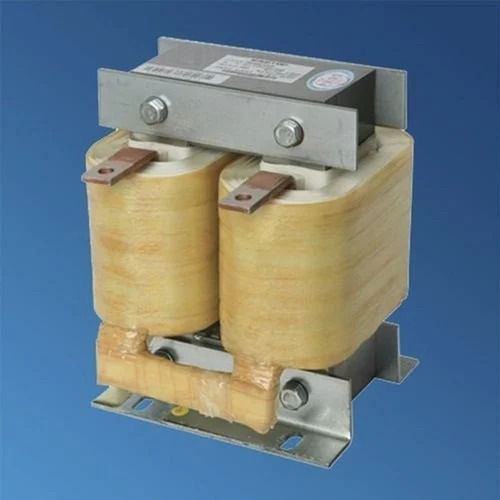- Home Page
- Company Profile
-
Our Products
- Electric Transformers
- Dry Type Transformers
- Control Transformers
- Cast Resin Transformers
- Ul Approved Transformers
- Resin Encapsulated Transformer
- Industrial Control Transformer
- Step UP Down Transformer
- Single Phase Auto Transformer
- Electrical Voltage Transformer
- Ultra Isolation Transformers
- High Frequency Transformers
- Electrical Inverter Transformers
- Step Up Transformer
- Step down transformer
- Single Phase Transformer
- Electrical AC Transformer
- Electronic Avionic Transformers
- Electrical Power Transformer
- Low Voltage Transformers
- Electrical Switching Transformer
- Ultra Isolation Transformers
- Current Transformers
- Single Phase Toroidal Transformers
- Electrical Ignition Transformers
- Variable Auto Transformer
- Constant Voltage Transformer
- Single Phase Pulse Transformer
- Electrical Ferrite Transformer
- Electrical Special Transformer
- Inductors & Panels
- Control panel
- Load Reactors
- Isolation transformers
- Detuned Reactors
- CE & UL marked Transformers
- Electric Moters
- Dry Type Lighting Transformer for Electrical Ap
- Power Transformers
- Control Transformers
- Sinusoidal Filters
- Magnetic Transformers
- Distribution Transformer
- Lighting Transformers
- High Frequency Inductors
- Power Switchgears
- Phoenix Terminal Blocks
- DC Electronic Chokes
- Cast Resin Transformers
- Unitized Substation
- Substation Transformer
- Electronic Choke
- Furnace Transformer
- Electric Transformers
- Contact Us

Inductors Chokes
25000 INR/Unit
Product Details:
X
Inductors Chokes Price And Quantity
- 25000 INR/Unit
- 1 Unit
Inductors Chokes Trade Information
- Letter of Credit at Sight (Sight L/C) Cash on Delivery (COD) Cash in Advance (CID) Cheque
- 1 Unit Per Day
- 1 Week
- Customized packing.
- Middle East Australia Africa Western Europe Central America South America Asia North America
- An ISO 9001:2008, ISO 2001:2000 & ISO 9001:2000 certified company
Product Description
We are engaged in manufacturing a complete range of Inductors and Chokes. The range we offer includes Line Reactors, Output Chokes for Drive Applications and DC Chokes. The range we offer is widely known for its efficiency and effectiveness in terms of functionality. These Inductors and Chokes can be availed in numerous technical specifications as per the requirement from the clients end. Some of the striking attributes are.
- Long service life
- Low power loss
- Negligible maintenance
- Durability
- Easy installation
Product details of Inductors Chokes:
|
Ambient Temperature |
40 Degree C |
|
Insulation class |
F/H class |
|
Input Voltage |
1 KV |
|
Phase |
Three Phase |
|
Power (VA) |
0.75 KVA-1000 KVA |
FAQs of Inductors Chokes:
Q1: What is an inductor?
A1: An inductor is an electronic part that stores electrical energy as an attractive field when flow moves through it. It goes against changes in flow, going about as a uninvolved electronic part that opposes unexpected changes in electrical flow.
Q2: What is a stifle?
A2: A stifle, frequently alluded to as an inductor or a curl, is an electrical part used to obstruct high-recurrence substituting flow (AC) while permitting low-recurrence or direct flow (DC) to go through. It's ordinarily utilized in electronic circuits to sift through undesirable high-recurrence commotion.
Q3: How does an inductor work?
A3: An inductor works by making an attractive field when current moves through it. This attractive field stores energy. At the point when the ongoing changes, the inductor opposes the change by prompting a voltage contradicting the adjustment of current. This property is the reason inductors are frequently called self-inductors.
Q4: How are inductors and chokes evaluated or indicated?
A4: Inductors and chokes are determined by their inductance esteem (estimated in henrys), resilience, current rating, and different boundaries like their opposition and self-thunderous recurrence. The detail relies upon the application and prerequisites.
Q5: What is the contrast between a stifle and a standard inductor?
A5: As a rule, the expressions stifle and inductor are utilized conversely. In any case, stifle frequently alludes to inductors planned explicitly for obstructing or lessening high-recurrence signals, for example, familiar mode chokes utilized in EMI sifting.
Q6: What are the units of inductance?
A6: The unit of inductance is the henry (H). One henry is equivalent to one volt-second per ampere. More modest units like microhenrys and millihenrys (mH) are ordinarily utilized in gadgets.
Q7: Might inductors at any point store energy like capacitors?
A7: Indeed, inductors can store energy in their attractive fields, like how capacitors store energy in electric fields. In any case, the energy stockpiling components and qualities vary among inductors and capacitors.
Enter Buying Requirement Details


 Call Me Free
Call Me Free